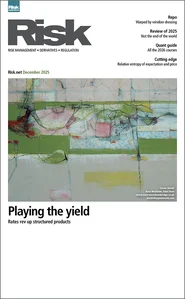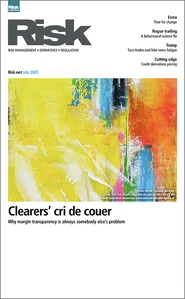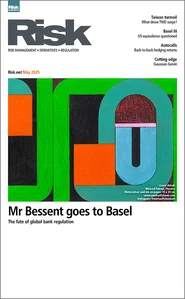Energy Risk - Volume3/No6
Articles in this issue
Integrating energy data
Knowledge is power, and having the latest information on the marketplace is of paramount importance. Eric Fishhaut looks at why centralising information can have a big impact on tactical management and developing strategies
CDM structures mature
Buyers and sellers in the clean development mechanism market now have a broader range of pricing structures at their disposal. Oliver Holtaway investigates
Special Report - Case study - Made to measure
Deutsche Essent tailors its approach to German energy markets. Will its bespoke strategy succeed where others have failed?
Commissioner Brownell
US Ferc Commissioner Nora Mead Brownell talks to Elizabeth Autumn about the pressing need for more investment in energy infrastructure in the US
Taking stock of SOX
Sarbanes Oxley has wide-ranging implications for US power companies on how they use, and record their use of, market data, writes Sandy Fielden
Special Report - Energy prices - Rising cost burden
German energy policy is hampering competitiveness, industry claims
A question of priority
The US Energy Policy Act of 2005 calls for a review of existing power dispatch methods. But replacing today's regional methods with a one-size-fits-all plan throws up many concerns, writes Richard McMahon
Convergence in Atlantic Basin coal
Atlantic Basin OTC coal trading is the envy of US and Asian markets, but until recently it was missing the key component of OTC contracts. But trading in globalCOAL's Atlantic products has taken off dramatically since the end of 2005, writes Stephen Doyle
Joined-up risk assessment
The nature of risk is changing. Energy companies, well-skilled in managing market risk and operational risks, may now need to adopt a new stance towards risk management, write Rohit Bhapkar, Roland Rechtsteiner and John Stroughair
Exchanging futures
There's no doubt that Andy Gooch takes the helm at Nymex Europe Limited in interesting times. While NEL's trading floor is in danger of closure, arch rival IntercontinentalExchange's new WTI contract has gained significant volume
Valid Assumptions Required: confidence level and holding period
In the second article of his series, Brett Humphreys examines the assumptions associated with selecting a confidence level and a holding period for a VaR calculation
Unearthing energy
As high natural gas prices continue to be the largest and ever-increasing cost for oil sands operations, the best hedge is a gasification strategy, says Catherine Lacoursiere
Matrix-based IAS 39hedge accounting
This paper outlines a method that facilitates IAS 39 hedge accounting. Thekey element is the representation of hedging instruments by an allocationmatrix. Giel Halberstadt’s method can easily be applied in any commodity orfinancial trading company
Special Report - Energy prices - Opening up the grid
Germany is set to move this year to an entry/exit system for access to its gas grids. But some in the market fear that unresolved issues could cause a bumpy start










